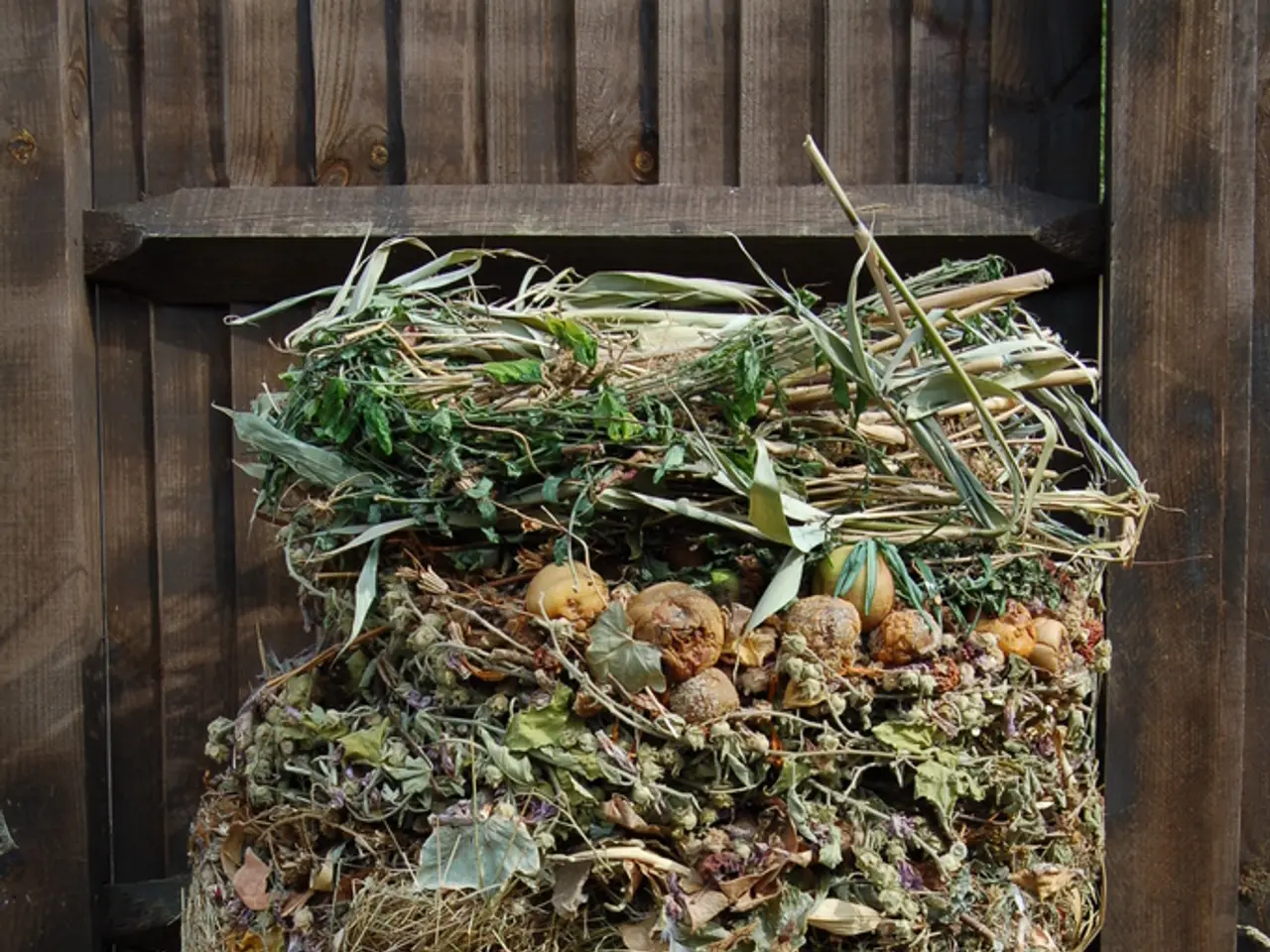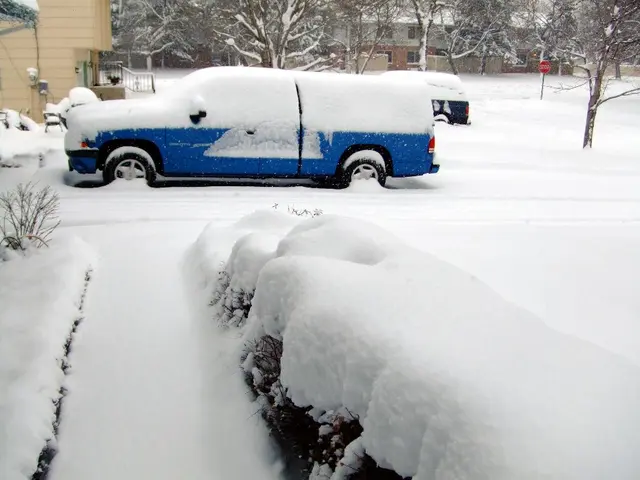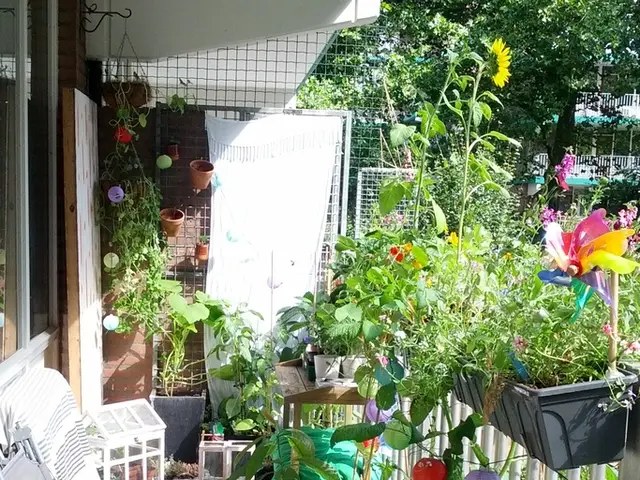Obstacles in Implementing the Back-to-Eden Gardening Technique
Let's handle that Back to Eden gardening conundrum, shall we? We've been digging this no-till, wood chip gardening thing since we stumbled upon the *Back to Eden documentary* about that sheet mulch method using wood chips or other natural mulch.
But it ain't always smooth sailing. A reader posed a question that covers quite a few of the challenges we've faced (and probably many of you have too). We want to help solve those issues and make your gardening dreams a reality.
Here's the question:
"I've been dying to figure out our Back to Eden garden problem. We've got a 25′ x 50′ garden that we used to till, plant, and weed. We always had a lush green garden, but managing the weeds was a chore. We've been doing the BTE method for two years now, and stuff sprouted but never matured, turned yellow, and died. We had a swarm of slugs (living in Northern NY, 30 miles south of Canada) and used diatomaceous earth and picked them off. After nothing grew, we guess we didn't give the cardboard enough time to break down for the plants to reach the soil and nutrients. Last fall, we covered the area with more compost and wood chips (small sized chips) for wintering over for 8 months. This spring, we planted some seedlings and seeds. With the chips moved aside for planting the seeds directly into the compost, and seedlings transplanted with holes down to the compost for the stems, everything still turned yellow and didn't mature. We tested the soil, which indicated low potassium and low nitrogen. Given our original soil and compost were dark and rich, we're confused about what went wrong. Help would be appreciated!"
Before we dive into our solutions, let's break down the issues:
- The garden struggled to yield mature plants
- The presence of slugs caused trouble
- The wood chips layer might not have been optimal
- Potassium and nitrogen levels were low
So, let's tackle this mess one chunk at a time:
1. Precious greens didn't mature: Wood chips don't wipe out weeds completely, and even though they suppress them, they can still crop up. If your soil already lacks nutrients, adding carbon-rich wood chips might exacerbate the problem. Wood chips should sit on top of the soil, not be layered in, and ideally, they should break down naturally.
2. The slug issue: Slugs love wet environments and might be drawn to your garden by the moist wood chips. Consider using composted wood chips or just plain compost if you reside in a wet region. If slugs persist, consider checking out Charles Dowding's approach from England – this guy's a slug-whisperer!
3. Having the wrong wood chips: Not all wood chips are perfect for a vegetable garden. Go for thin branches or leaves, shredded, and composted. Fresh wood chips can be used as long as they have leaves. Chocolate-chip cookies are another matter altogether!
4. Imbalanced potassium and nitrogen: Testing the soil revealed low levels of potassium and nitrogen. One hypothesis is that the contaminated compost or cardboard could be the culprits. Wait it out, or gather the layers and let it sit for a few years – you'll wind up with excellent compost to use in your garden.
5. Layering cardboard: It's not a Thing. Newspaper might be an option, but cardboard tends to take too long to break down, and it's just not necessary.
6. Planting hassles: Wood chips can make planting more challenging. Plant earlier and deeper, or cover small seeds with potting soil or compost. Give your babies a fighting chance!
For more gardening knowledge, hop on over to our website, follow us on Facebook or Pinterest, or join our discussions on Reddit*. Here are some other posts that might tickle your fancy:
- Soil For Seedlings, Container Gardening, and Raised Beds
- No-Till Gardening Methods to Start a New Garden
- Simple Winter Compost Solution
- Preparing the Garden for Winter in a Cold Climate
- Challenges with the Back to Eden Gardening Method
- Raised Window Protected Garden
- To Till or Not to Till the Garden for Better Soil
- Raised Garden Beds vs Container Gardens
- Pros and Cons of Using Landscape Fabric in Your Garden
- Expanding the Country Garden Beds
- In their Back to Eden garden, the wood chips didn't suppress weeds completely, and these weeds might have depleted the nutrients meant for the plants.
- To combat the slug population in a cold climate like northern NY, one could opt for composted wood chips or plain compost instead, or explore a system proposed by Charles Dowding, a renowned slug-whisperer.
- The ideal wood chips for a vegetable garden are thin branches, leaves, or shredded, composted ones, especially in moist environments.
- The low potassium and nitrogen levels seen in the soil may have originated from the contaminated compost or cardboard layers, necessitating waiting it out or gathering the layers to compost for several years.
- Utilizing cardboard in the layering process is not considered beneficial as it takes too long to break down and isn't necessary. Newspaper could be a reasonable alternative, though.
- Planting in wood chip-covered gardens might be difficult. Planting earlier and deeper, or covering small seeds with potting soil or compost before planting, could improve a plant's chances of maturity and growth.
Additionally, for more gardening knowledge, explore our home-and-garden website, follow us on Facebook or Pinterest, or engage with our community on Reddit. Some informative posts include:
- 'Soil For Seedlings, Container Gardening, and Raised Beds'
- 'No-Till Gardening Methods to Start a New Garden'
- 'Simple Winter Compost Solution'
- 'Preparing the Garden for Winter in a Cold Climate'
- 'Challenges with the Back to Eden Gardening Method'
- 'Raised Window Protected Garden'
- 'To Till or Not to Till the Garden for Better Soil'
- 'Raised Garden Beds vs Container Gardens'
- 'Pros and Cons of Using Landscape Fabric in Your Garden'
- 'Expanding the Country Garden Beds'






